Venice, Paolo Veneziano's polyptych returns to Gallerie dell'Accademia after four years of restoration
After a long and complex restoration that lasted more than four years, funded by SAVE Venice with the support of Dr. & Mrs. Randolph H. Guthrie, the Gallerie dell’Accademia in Venice will return to display Paolo Veneziano’s masterpiece, the Santa Chiara Polyptych, unveiled to the public and the press on Oct. 4, 2024.
The work, displayed in a dedicated room of the Palladian loggia, is one of the most intact and valuable examples of 14th-century Venetian painting. Created for the monastery of Santa Chiara in Venice, the polyptych depicts theCoronation of the Virgin in the center, surrounded by twenty-five narrative panels and framed by a sumptuous gilded structure. After the Napoleonic suppression, the polyptych was transferred to the Gallerie dell’Accademia in 1812, with the exception of the central panel, which was sent to the Pinacoteca di Brera in Milan and reunited with the rest of the work only in 1950.
The restoration, under the direction of Valeria Poletto, brought back the original brilliance of the colors and gold, as well as previously unpublished details such as preparatory sketches and hidden color proofs. Innovative tools such as photogrammetric scanning and the Hirox 3D digital microscope made it possible to map the morphology of the work and study it in unprecedented detail.
The intervention on the frame, carried out with laser technologies, allowed the 19th-century gilding to be recovered in an excellent state. In addition, a new support structure was designed to ensure optimal conservation of the work.
The exhibition is enhanced by a multimedia presentation that allows visitors to virtually explore the work, delving into the restoration, historical events, and diagnostic techniques used.
On display alongside the polyptych will be an early 14th-century astylar cross from a private collection attributed to the Washington Master of the Coronation of the Virgin, probably identified with the brother or father of Paolo Veneziano. This extraordinary cross, painted on both sides, offers further evidence of the Venetian pictorial quality of the period.
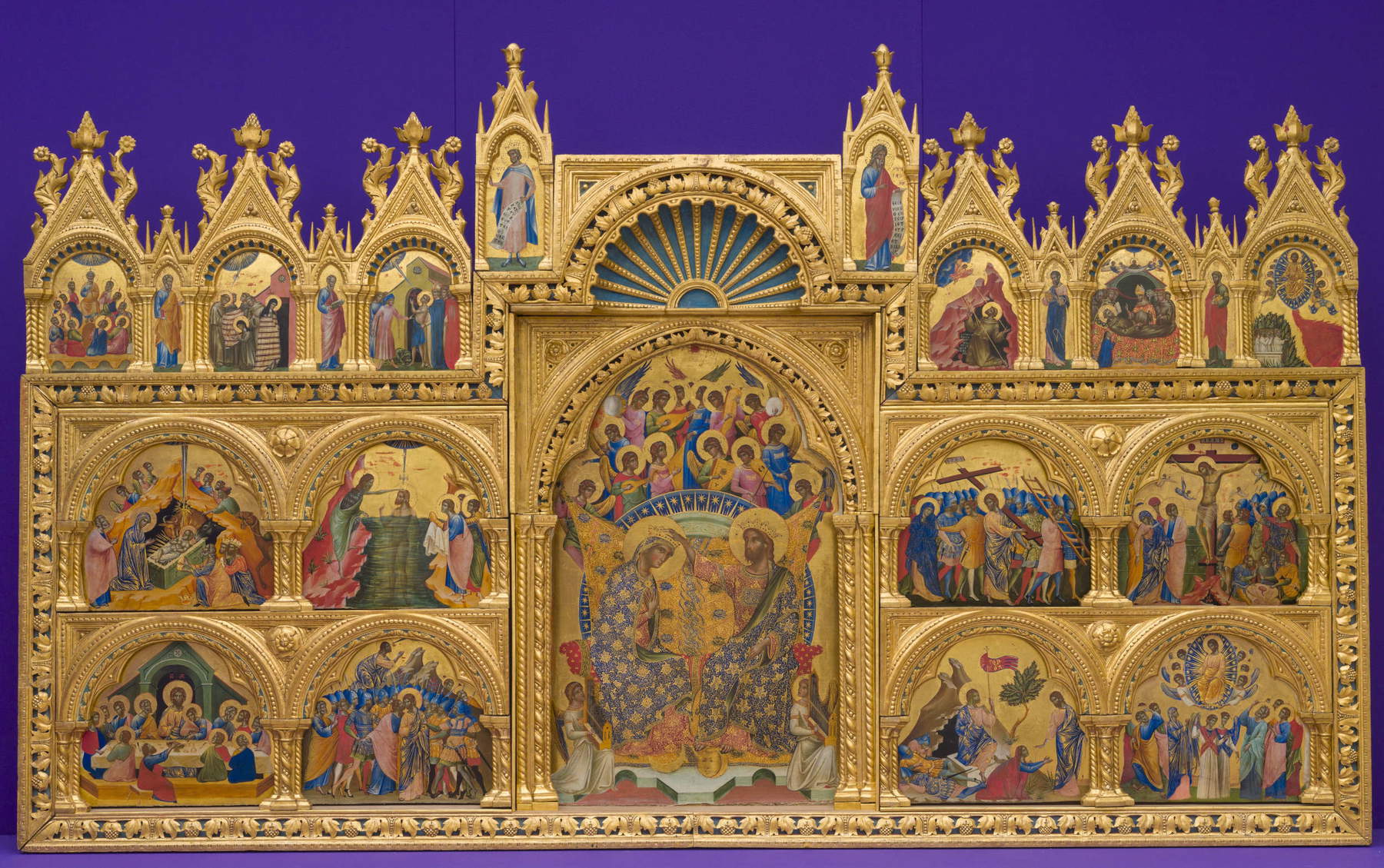
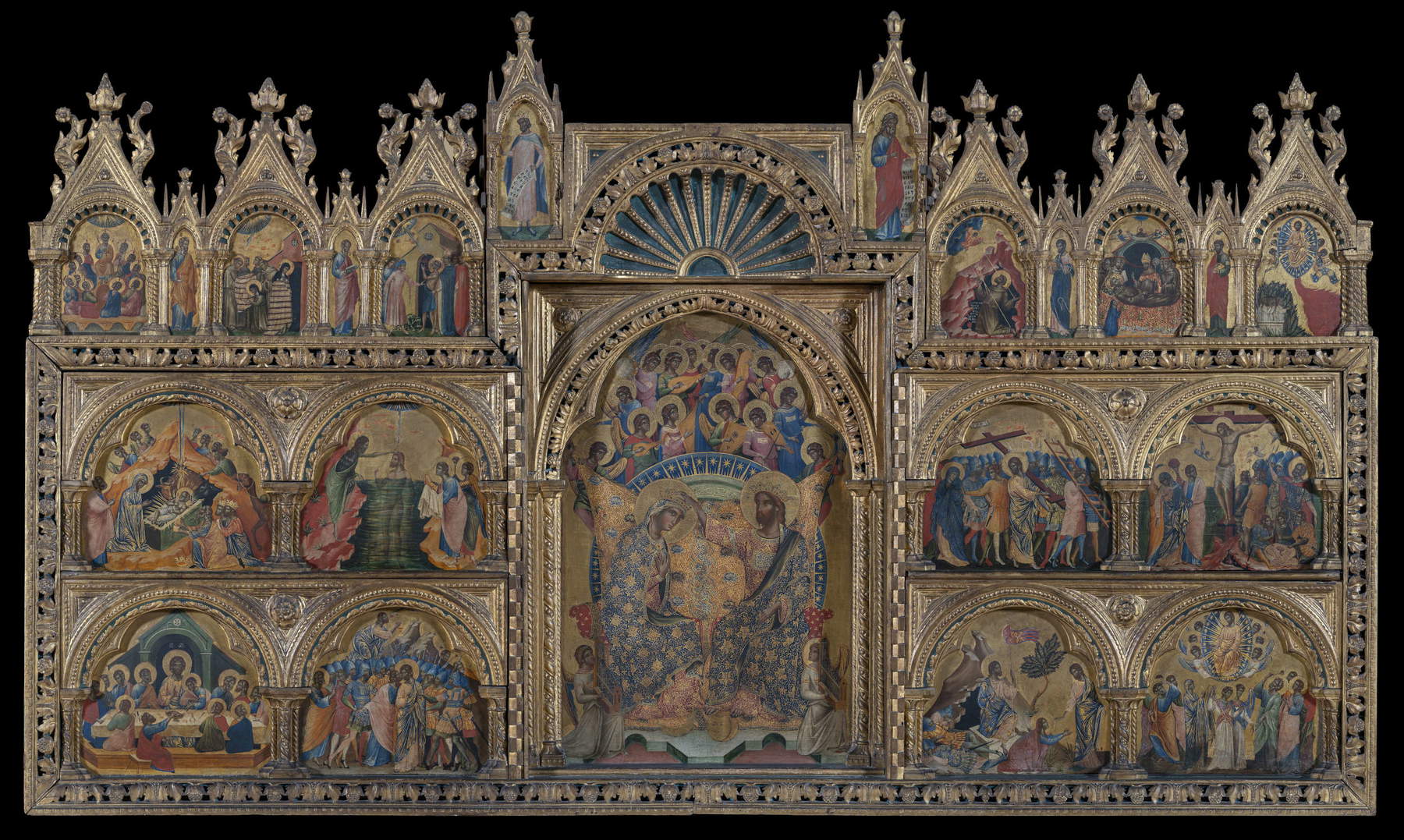
The restoration
The conservation intervention, which began in 2019, restored the polyptych to its refined chromatic range, enhancing the warmth of the gilded surfaces and the full legibility of its articulate iconographic program. A key element of the restoration involved the original woodwork and the complex carved frame, which had been reworked on at least two occasions: when the artifact was still at the monastery of Santa Chiara and later in 1830.
During the dismantling of the work, essential information about the original carpentry structure and the applied carvings emerged, revealing the need to design a new support structure, specifically designed to meet the conservation needs of the artifact. This made it possible to visually restore the original relationship between the paintings and the carvings, which were originally anchored directly to the boards. The 19th-century additions, which distorted the reading of the work, were removed, allowing the recovery of the original dimensions of the perforated perimeter frame.
The frame was cleaned using laser technology, a highly selective technique that removed the most recent stratifications, recovering the nineteenth-century gilding in excellent condition. The patination of the same period was maintained to harmonize the gilding with the gilded backgrounds of the paintings. The pictorial parts, surprisingly well preserved, benefited from an intervention of cleaning and pictorial reintegration that restored the color balance and surface finish, revealing executive particularities of rare fineness.
The success of this restoration was made possible by a targeted diagnostic campaign, which employed different technologies to examine various aspects, including non-visible ones, of the work. The non-invasive diagnostic investigations, based on various electromagnetic radiations, allowed an in-depth study of the layers and execution technique of the polyptych, providing valuable indications for the understanding of the relationships between the parts of the work, which had long been altered, and enabling a deeper understanding of the artifact.
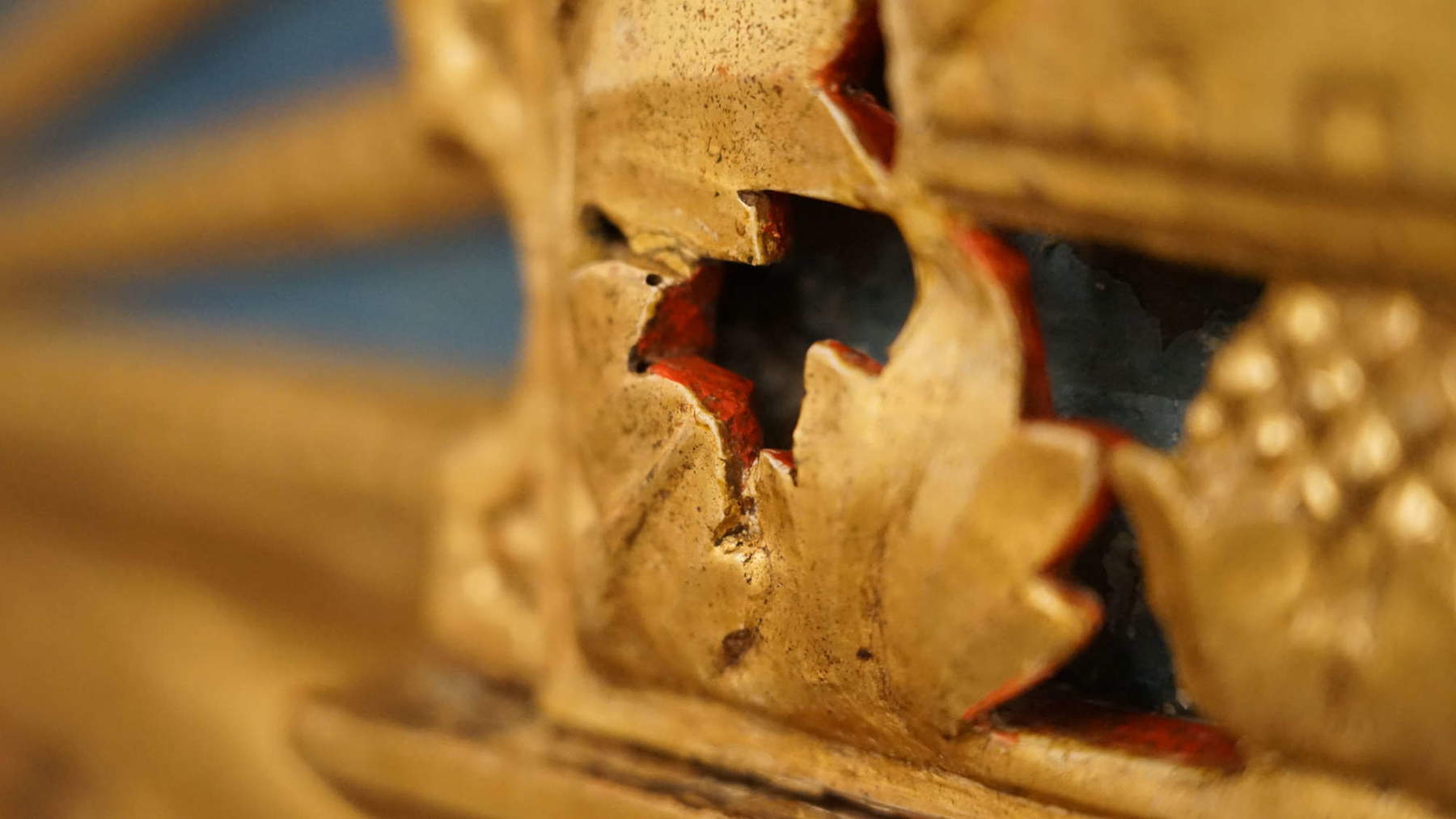
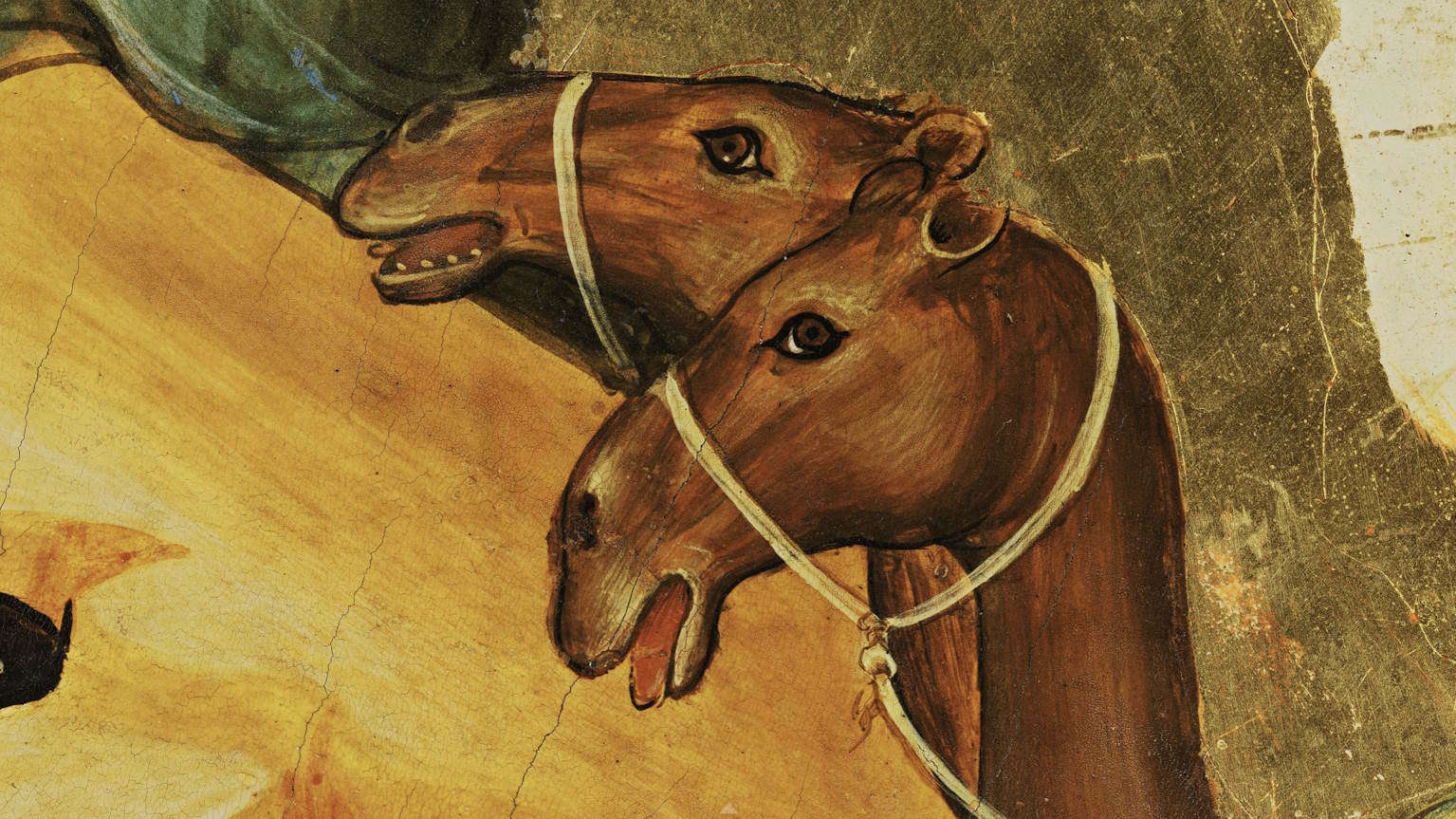
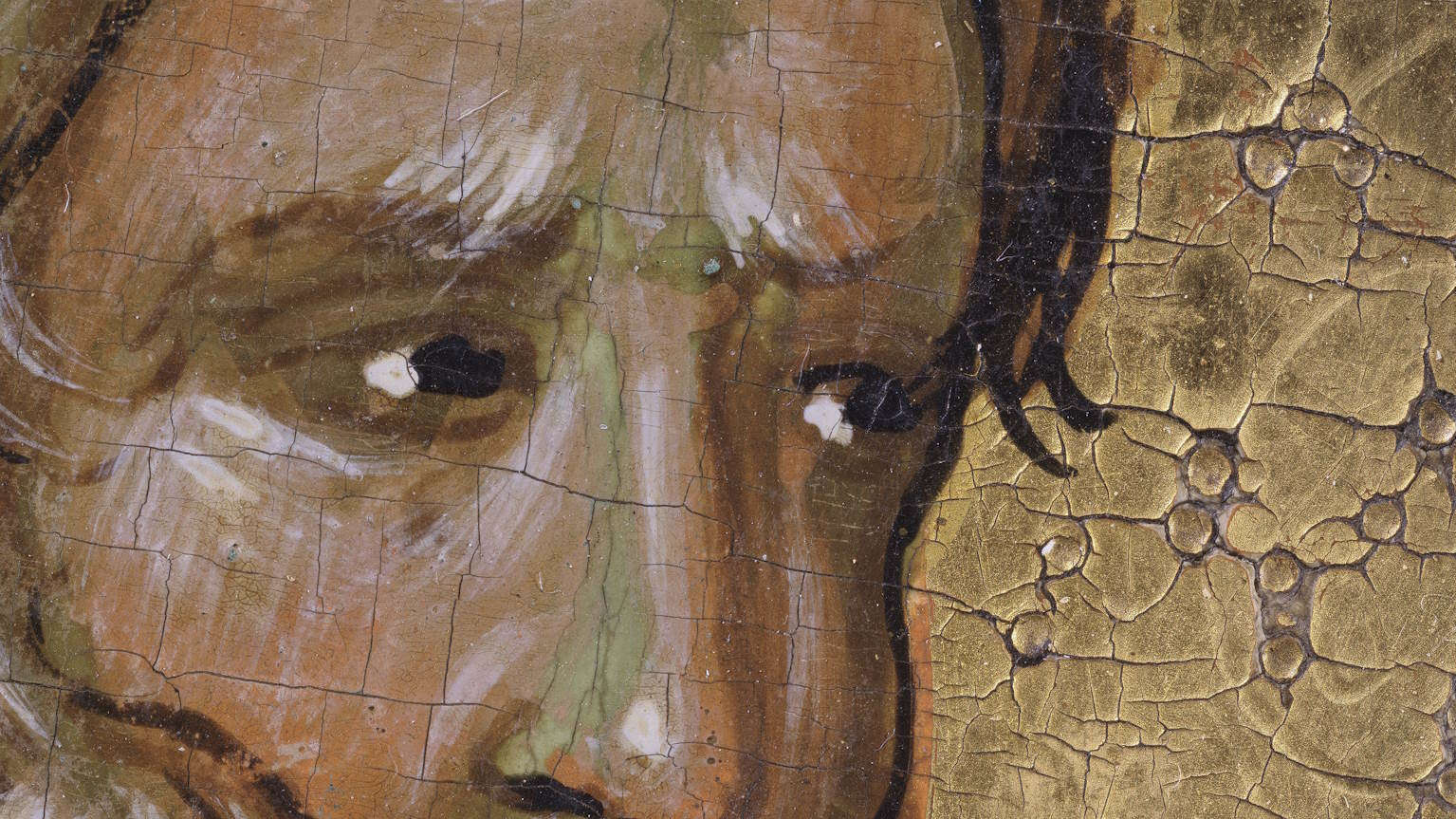

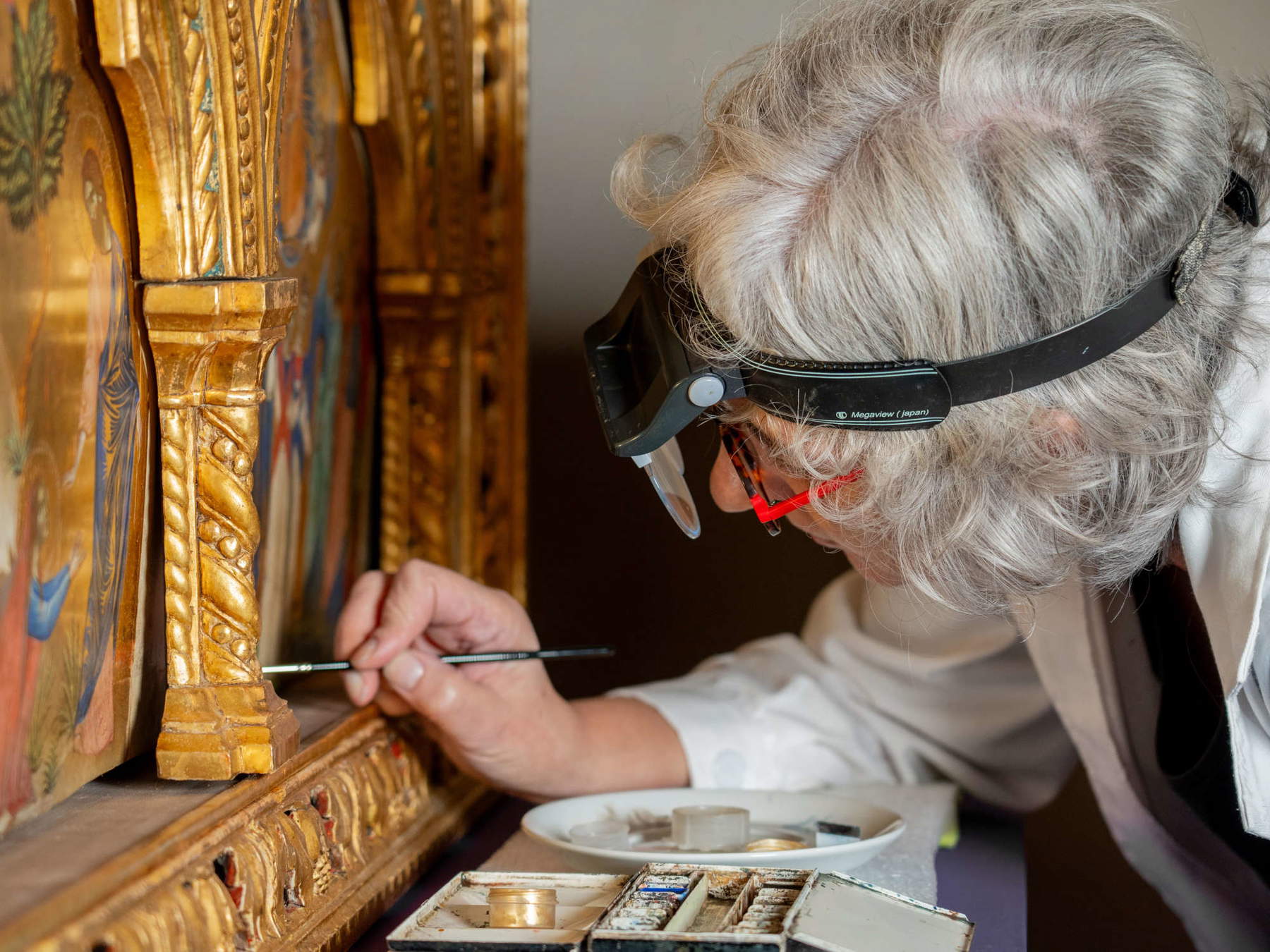
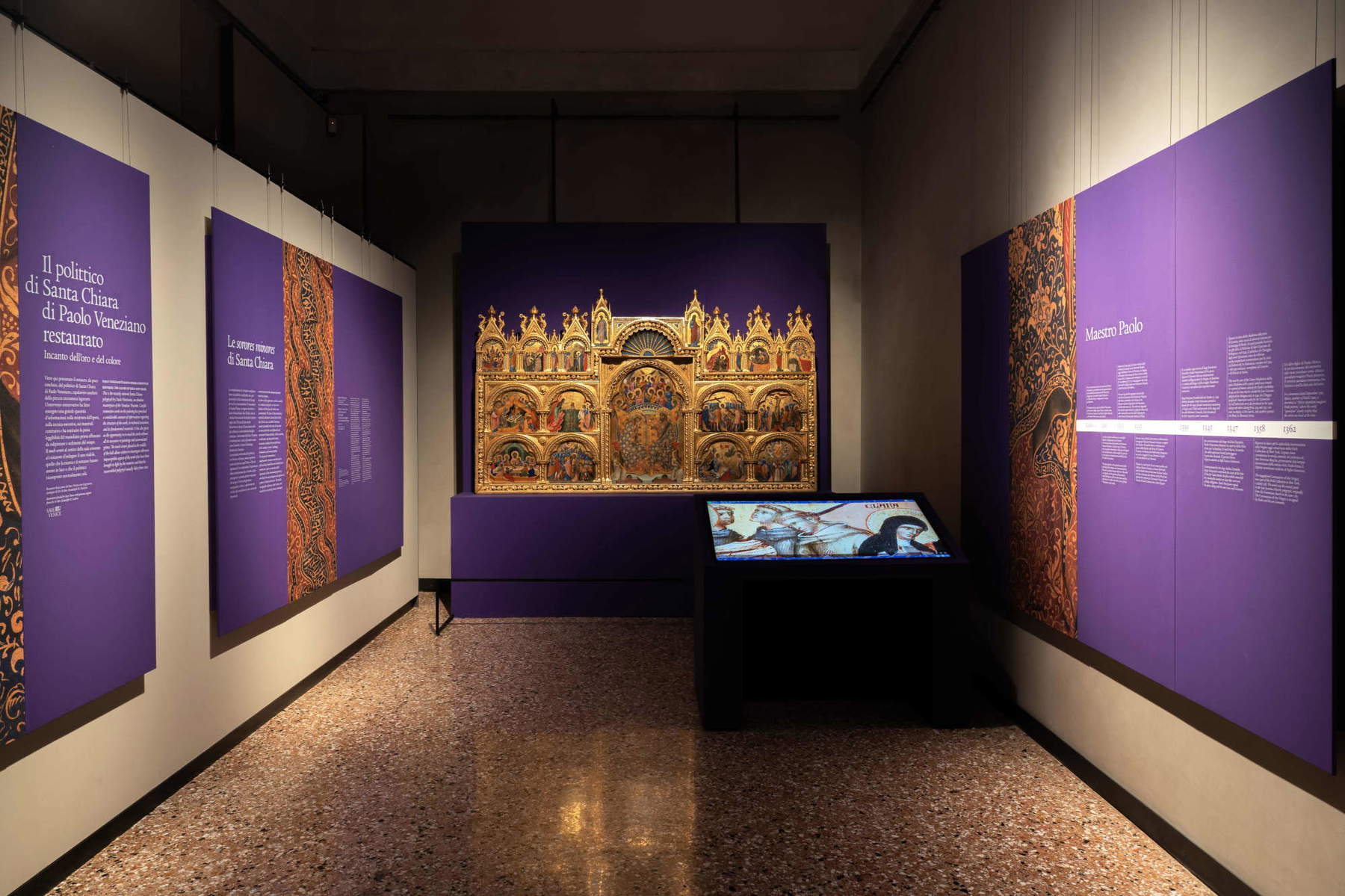
The polyptych of Paolo Veneziano
The polyptych by Paolo Veneziano, from the monastery of the Poor Clares of Santa Chiara in Venice, is a work of extraordinary artistic quality and a significant example of a multi-order polyptych. In the center of the composition we find theCoronation of the Virgin, flanked by episodes from the life of Christ and, in the upper part, moments from the lives of St. Francis and St. Clare. In the upper part, figures of King David, the prophet Isaiah, the four evangelists, and scenes from Pentecost and the Last Judgment complete the iconography.
The work was attributed to Paolo Veneziano in 1924 by Raimond van Marle, and later, in 1946, art historian Roberto Longhi suggested that it was a nostalgic revival of the Byzantine style, dating it to the mid-14th century. Recent studies, however, place the polyptych in an intermediate period, around the years between the Vicenza polyptych (1333) and the 1345 weekday altarpiece. The absence of the specific punch used by Paolo Veneziano in works after the Chioggia Polyptych of 1349, highlighted in 2013 by Roberta Salvador, supports a dating earlier than that year, although Gothic elements and the refined decoration suggest not to anticipate it too much.
The polyptych comes from the monastery of Santa Chiara, the oldest Franciscan women’s settlement in Venice, founded in the 1330s by Sister Costanza Calbo. The coenoby, initially dedicated to Santa Maria Mater Iesu Christi, housed Venetian noblewomen such as the Dandolo, Corner and Soranzo families. The monastic community established itself as an important center, although located in a marginal and marshy area of the city. The original location of the polyptych is not documented with certainty, but it is assumed that it was displayed on the high altar of the outer church or in the nuns’ choir, a more intimate space, typical of cenobia, where the minute details of the narrative scenes could have been best appreciated. The iconographic message of the polyptych, characterized by Franciscan and meditative spirituality, supports the latter hypothesis.
In 1574, a fire destroyed the church and part of the monastery, but the polyptych had already been moved elsewhere, probably to a secondary room, ensuring its survival. With the Napoleonic suppression of the monastery in 1806, the polyptych was dismembered: the central panel, with the Coronation of the Virgin, was sent to the Pinacoteca di Brera in Milan in 1808, while the remaining panels were among the first works acquired by the Accademia di Belle Arti in Venice. For a long period, these two parts of the work followed separate collecting and conservation paths.
In 1828-29, the Venice polyptych was restored (Andrea Gomez took care of the frame and Francesco Bianchini the painted parts) and the missing part in the center was supplemented with a panel by Stefano di Sant’Agnese. Only in 1950, thanks to the collaboration between Superintendents Vittorio Moschini and Fernanda Wittgens, was the polyptych reassembled with its original central compartment. This work represents one of the most precious testimonies of 14th-century Venetian painting, and the restoration has made it possible to reappreciate its refined decoration and complex woodwork, restoring it to its former glory.
 |
| Venice, Paolo Veneziano's polyptych returns to Gallerie dell'Accademia after four years of restoration |
Warning: the translation into English of the original Italian article was created using automatic tools. We undertake to review all articles, but we do not guarantee the total absence of inaccuracies in the translation due to the program. You can find the original by clicking on the ITA button. If you find any mistake,please contact us.





























